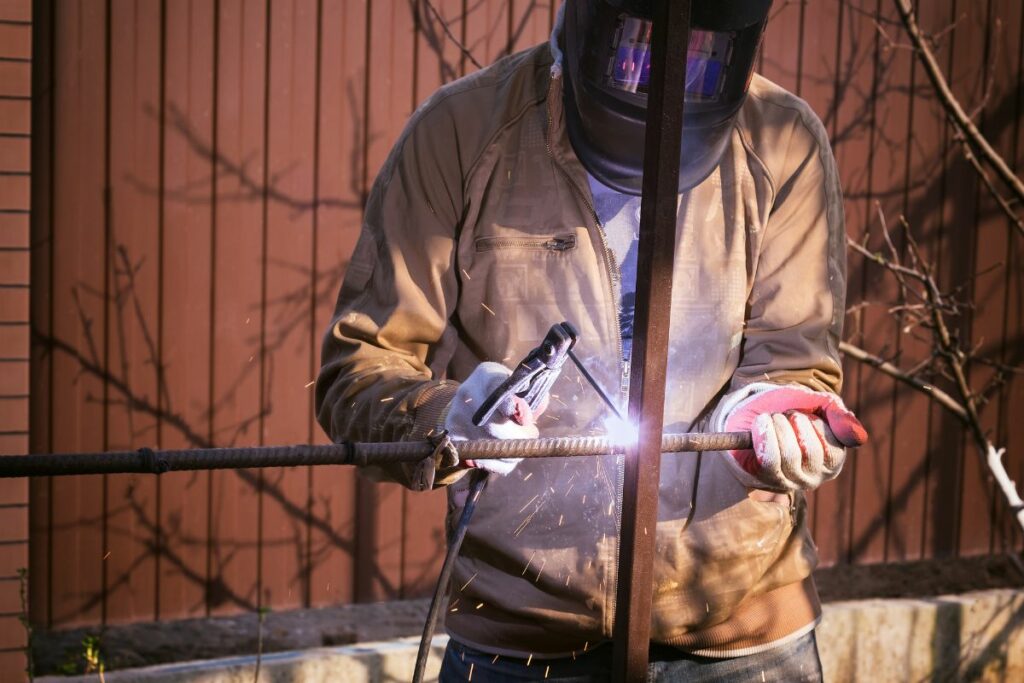
From construction to manufacturing: welding is a fundamental process in various industries. While its role in creating strong and durable structures is indispensable, it can also pose potential hazards without proper safety measures. Creating a secure workspace for both yourself and your team should be your number one priority when engaging in welding activities. Let’s take a look at 5 key safety practices to ensure a safe working environment.
One of the primary ways to ensure a secure welding environment is by investing in high-quality protective gear. Welding generates intense heat, sparks, and harmful fumes that can cause severe injuries. Personal protective equipment (PPE) such as welding helmets with auto-darkening filters, flame-resistant clothing, gloves, and safety boots are essential. Helmets not only shield the eyes from bright flashes but also protect the face and neck from sparks and debris. Flame-resistant clothing prevents burns, and sturdy gloves offer protection against heat and sharp objects. Wearing appropriate gear is the first line of defense against potential welding hazards.
Proper ventilation is crucial in welding environments to prevent the accumulation of hazardous fumes and gases. Welding produces smoke and fumes containing metal particles and other harmful substances. Prolonged exposure to these can lead to serious health problems such as respiratory issues. Implementing effective ventilation systems, such as exhaust fans and fume extractors, helps remove contaminants from the air, maintaining a healthy workspace. Adequate ventilation is not only a safety measure but also promotes a more comfortable and productive working environment for the entire team.
As you are working with open flames and hot materials, make fire safety a top priority. Ensure that your workspace is equipped with fire extinguishers and that everyone on the team knows their location and how to use them. Regularly inspect and maintain fire extinguishers to guarantee their functionality in case of an emergency. Additionally, having a designated area for welding, free from flammable materials, minimises the risk of accidental fires. Conducting regular fire drills and providing fire safety training further enhances preparedness and reduces the potential impact of a fire-related incident.
Knowledge is power, especially when it comes to safety in the workplace. Ensure that your team is well-trained in handling welding equipment, safety protocols, and emergency procedures. Invest in comprehensive training programs that cover the basics of welding safety, the proper use of equipment, and the identification of potential hazards. Regular updates and refresher courses inform the team about the latest safety standards and practices. Well-educated team members are more likely to recognise and address potential dangers, fostering a culture of safety within the workplace.
Regular maintenance of welding equipment is not only important for its performance but also for the safety of the operators. A faulty tool can lead to accidents, injuries, or worse. Implement a routine maintenance schedule for welding machines, checking for any signs of wear, damage, or malfunction. Replace worn-out parts promptly and ensure that safety features, such as emergency shut-off switches, are in working order. Well-maintained equipment not only contributes to a safer working environment but also extends the lifespan of the tools, reducing the risk of unexpected breakdowns.
In a welding workplace, where precision and skill are essential, safety should always be the top priority. By investing in protective gear, implementing effective ventilation systems, prioritising fire safety, providing thorough training, and maintaining equipment, you create a secure workspace for yourself and your team. A commitment to safety not only prevents accidents and injuries but also contributes to increased productivity and a positive work environment.
Remember, in welding, it’s not just about creating strong and durable structures—it’s about ensuring the well-being of the team that builds them.